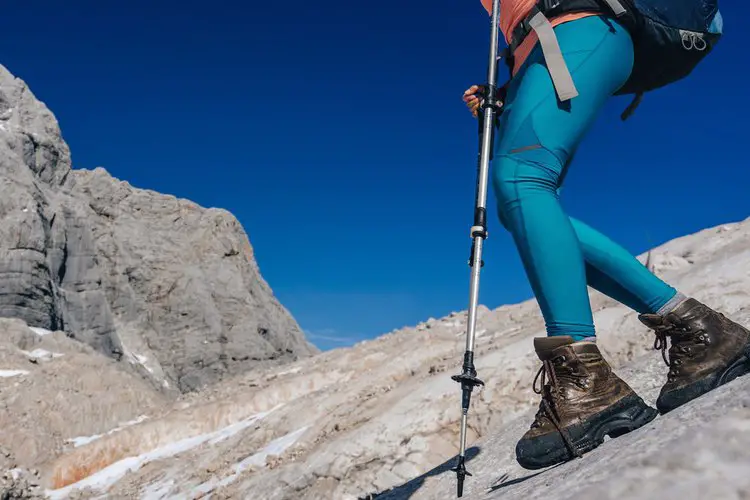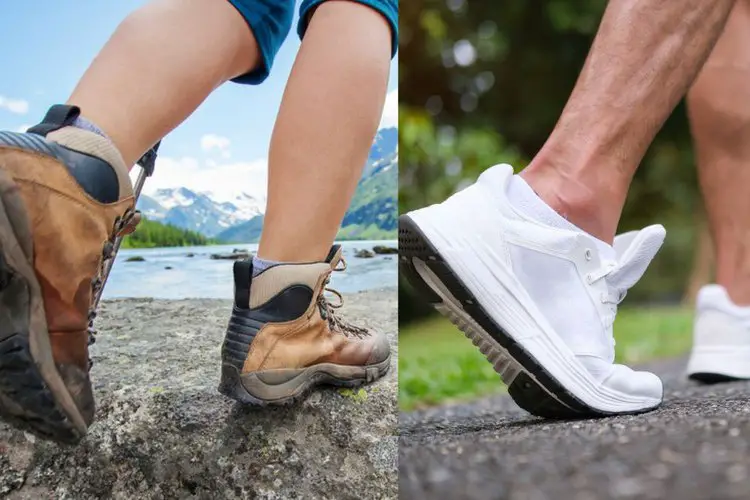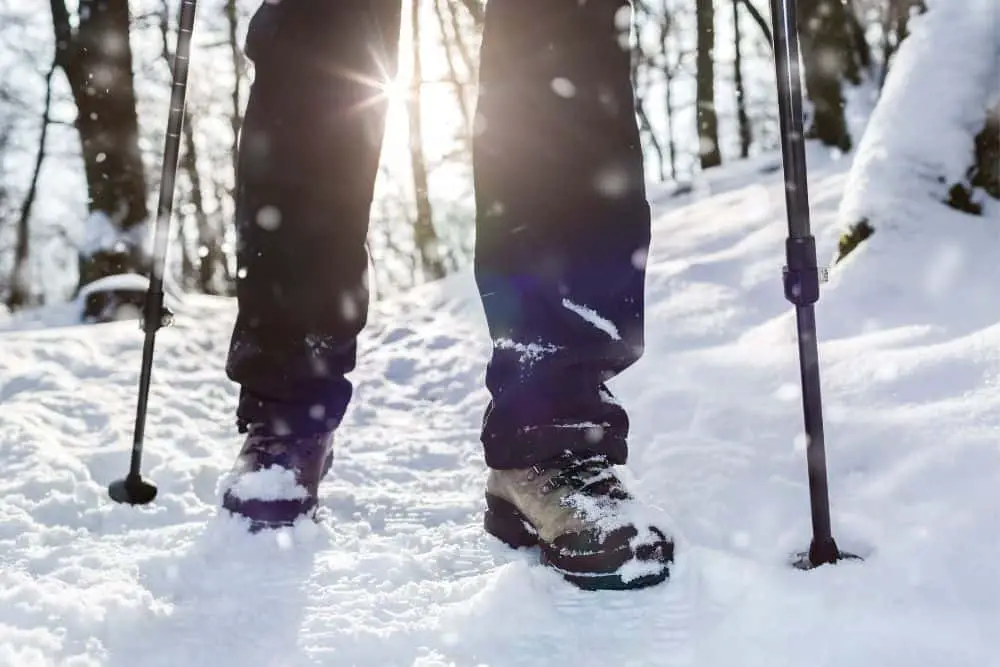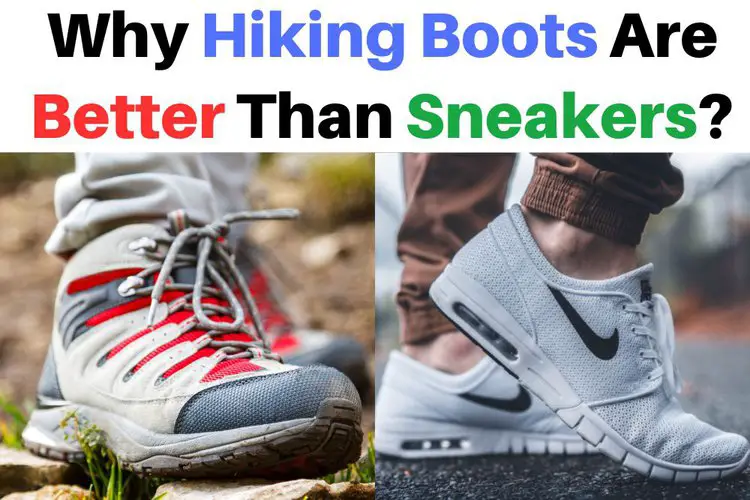If you’re planning on going on a hike, choosing the right footwear is crucial. While sneakers are a popular choice for many, there are several reasons why hiking boots are the better option in certain situations.
In this article, we will explore why hiking boots are better than sneakers and when you should wear them.
Key Takeaways
- Hiking boots offer more support and protection for your feet and ankles than sneakers. This is especially important on longer and more challenging hikes where the terrain is uneven or rocky.
- Hiking boots are also designed to be more durable and weather-resistant than sneakers so they are a better choice for hiking in wet or cold conditions.
- However, hiking boots can be heavier and less breathable than sneakers, making them less comfortable for shorter, easier hikes or in warm weather.
- Ultimately, the choice of footwear depends on the individual’s needs and preferences, as well as the terrain, weather conditions, and the length of the hike.
- It’s important to consider the trade-offs between hiking boots and sneakers and choose the appropriate footwear for each situation. While hiking boots are better in some cases, they are not necessarily better in all cases.
Contents
- Hiking Boots and Sneakers in Hiking Activities, why and when are hiking boots a better choice?
- Hiking Boots Provide Better Traction
- Hiking Boots Offer Better Ankle Support
- Hiking Boots Are More Durable
- Hiking Boots Are Better for Carrying Heavy Loads
- Hiking Boots Are Ideal for Cold Weather
- Hiking boots have a wide range of types for specific functions
- Conclusion
Hiking Boots and Sneakers in Hiking Activities, why and when are hiking boots a better choice?
When it comes to hiking footwear, there are two primary options: hiking boots and sneakers.
- Hiking boots are designed specifically for hiking activities and are made of durable materials that can withstand various terrains and weather conditions.
- Sneakers, on the other hand, are more versatile and can be used for a wide range of activities (running, walking, etc).
Hiking Boots Provide Better Traction

One of the most significant advantages of hiking boots over sneakers is that they provide better traction.
The soles of hiking boots are designed to grip the ground, making them ideal for hiking on rough, slippery, or uneven terrain.
In contrast, sneakers have flat and smooth soles that can cause slipping or sliding on wet or rocky surfaces.
Hiking Boots Offer Better Ankle Support
Another advantage of hiking boots is that they provide better ankle support than sneakers.
Hiking boots are designed to support the ankle joint and prevent ankle sprains or other injuries.
The high ankle cuff in hiking boots ensures that your foot stays in place and prevents unnecessary movements (which could cause injury).

In contrast, most of today’s popular sneakers are low cut, which ensures you have a flexible ankle but lack the support needed when encountering rough, uneven terrain or when carrying heavy loads.
Hiking Boots Are More Durable
Hiking boots are designed to withstand harsh conditions and provide long-lasting use.
Hiking boots are typically made of strong and sturdy materials such as leather, Gore-Tex, or synthetic materials that can withstand water, mud, and other environmental hazards.
In contrast, sneakers are typically made of lightweight materials that are not durable enough for harsh outdoor activities.
Hiking Boots Are Better for Carrying Heavy Loads

If you’re carrying a heavy backpack or other equipment, hiking boots are the better option.
Hiking boots are designed to support your feet and provide better stability. The added ankle support and durable materials make hiking boots the perfect choice for carrying heavy loads over long distances.
Hiking Boots Are Ideal for Cold Weather

If you’re hiking in cold weather, hiking boots should be the way to go. The thick insulation and waterproof materials in hiking boots keep your feet warm and dry in cold, wet, or snowy conditions.
In contrast, sneakers are typically made of lightweight materials that do not provide adequate insulation in cold weather.
Hiking boots have a wide range of types for specific functions
While hiking boots are not necessarily better than sneakers in all cases, they offer several advantages in terms of support, protection, and durability.
With a wide range of types and styles available (lightweight, midweight, and heavy-duty boots), hiking boots can help you conquer different terrain, environments, and hiking styles.
By choosing the right pair of hiking boots for your needs, you can ensure a comfortable and safe hiking experience.
Sneakers, on the other hand, are also diverse in style, but they are still inferior when it comes to serving specific activities (they are mainly for walking and running).
Conclusion
| Hiking Boots | Sneakers | |
| Support | Excellent | Limited |
| Protection | Excellent | Limited |
| Traction | Excellent | Limited |
| Durability | Excellent | Limited |
| Comfort | Good | Excellent |
| Breathability | Limited | Excellent |
| Terrain compatibility | Excellent | Limited |
| Style and function | Available in a wide variety of types and styles to accommodate different terrains, hiking styles, and personal preferences. | Available in a variety of styles, but generally less specialized for specific activities. |
As you can see, there are various kinds of hiking boots to suit various terrains, hiking styles, and individual preferences. This allows hikers to choose a hiking boot that is specifically designed for the type of hiking they will be doing, whether it’s a lightweight trail runner for day hikes or a heavy-duty mountaineering boot for more challenging expeditions.
For sneakers, though offering different types and styles, they are typically less designed for particular activities. While there are hiking-specific sneakers on the market, they do not offer the same level of support, protection, or durability as hiking boots.
Ultimately, the choice between hiking boots and sneakers depends on a variety of factors, including the type of hiking you plan to do, the conditions you will encounter, and your personal preferences. Consider the pros and cons of each option and choose the footwear that is best suited for your needs.

